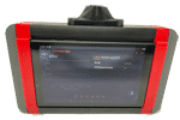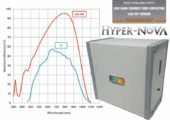Broadly speaking, resolution is the ability to detect differences in measured units. For spectroscopy experiments, the measured unit is the quantity used to describe the photon (e.g. wavelength, wavenumbers, frequency, energy). For example, if the resolution of an experiment is 1 nm, then the experiment can tell the difference between peaks at 500 nm and 501 nm, but it cannot tell the difference between peaks at 500 nm and 500.5 nm. The observed resolution in an experiment depends on the linewidth of the transition and the spectral resolution. In most instances, only one contribution to the experiment is significant and the other can be ignored.
Introducing our new Applied Spectroscopy Division
New Handheld Raman!
New! ChemWiz-ADK Handheld NIR Spectrophotometer with on board chemometrics and spectral matching!
Read More
Check out our SpectroChemistry Systems for UV-VIS and Fluorescence Applications
Learn More
New Spectrometer Python Application Driver
for Windows, Linux, RasPi, Mac
Check it out!
HYPER-Nova Highest Performance Raman Spectrometer
Learn More





